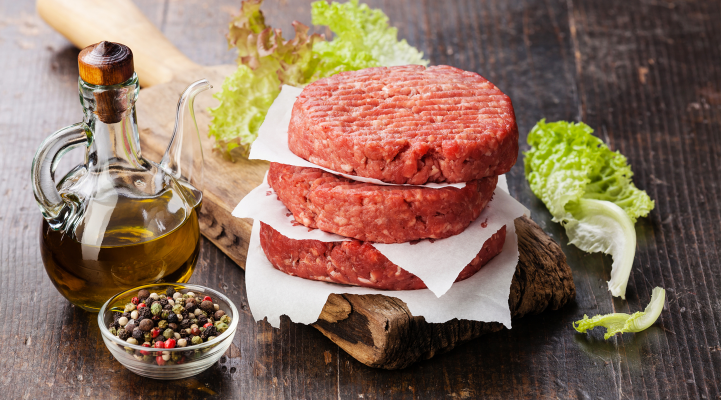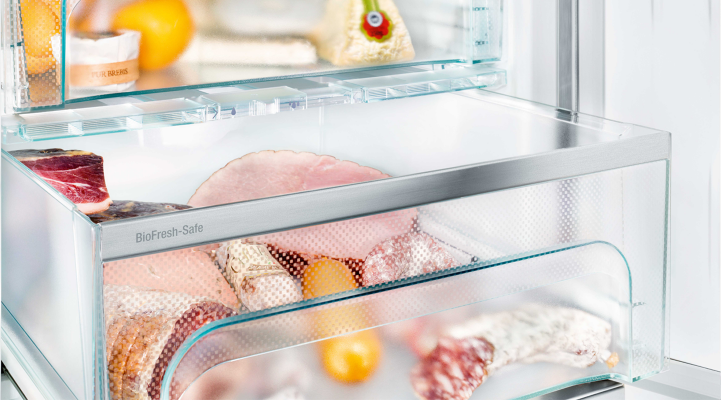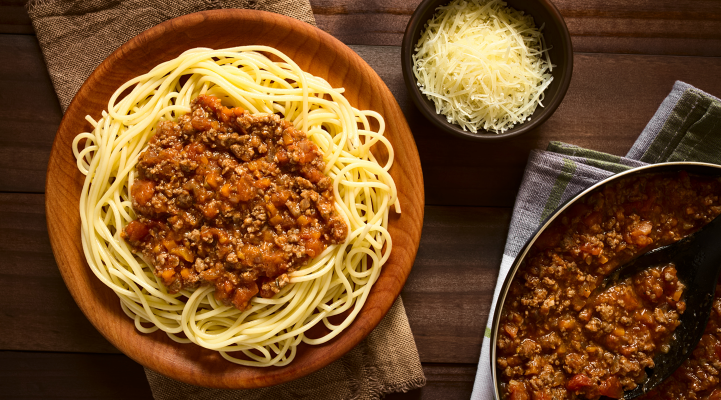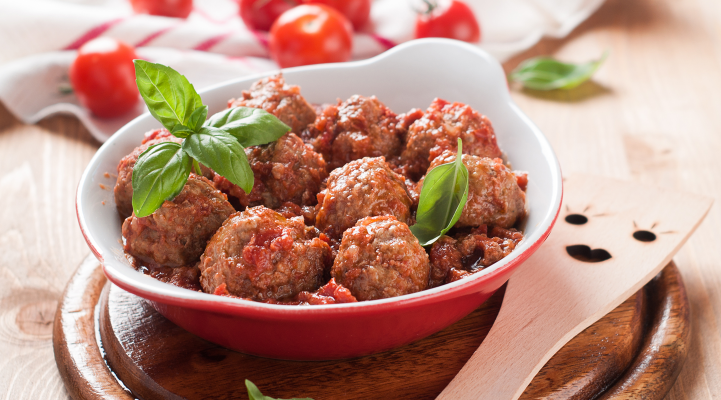Bolognese, meatballs and moussaka – all of these dishes contain one essential ingredient: minced meat. Whether it’s beef, pork, chicken or lamb – the variety of meat your butcher uses to produce fresh mince each day is as diverse as the ways it can be used. Read all you need to know here about storing and using minced meat.
All meat-eaters can recall the unique flavour of good old-fashioned meatball recipes or that delicious serving of spaghetti bolognese. Almost all of us, whatever our age, enjoy dishes prepared using minced meat. However, mince is actually incredibly delicate and highly perishable, so there are a few basic rules to stick to when it comes to storage and preparation.
Not all minced meat is the same
Mince can basically be produced using the meat from any warm-blooded animal, but minced beef and minced pork are particularly popular. However, minced meat produced from chicken, lamb, venison and ostrich can also be found. Besides “minced meat”, the terms ground meat and chopped meat are also common.
How is mince produced?
The butcher uses only the skeletal muscles and the animal’s fat and then grinds the meat. The fat content of the minced meat differs according to the volume of fat used and the species. Lean mince contains a maximum of 7% fat, pure minced beef has a maximum of 20% fat and pure minced pork, at most, 30% fat.

Minced meat differs according to the species and the fat content.
Use-by and best-before dates
The use-by date on packs of minced meat should, of course, always be adhered to. This is because mince is highly perishable and, if not handled correctly, can very quickly result in foodborne infections or food poisoning. The grinding of the meat means the mince has a very large surface area which is ideal for the growth of harmful microbes.
If you weren’t already aware, the use-by date is different to the best-before date. The best-before date simply indicates the date up to which specific qualities such as flavour and nutritional value remain the same – in most cases the product can still be consumed without any concerns once the best-before date has expired. This is different in the case of the use-by date. Once this has expired, the food may pose a serious health risk. So, dispose of food once the use-by date has passed.
A salmonella send-off
Even around a century ago, it was not uncommon to end up with a salmonella infection following minced meat consumption, which would lead to gastrointestinal disease. As a consequence, a regulation governing minced meat was passed in relation to production, packaging, storage, transportation and sales of meat and minced meat. You can read The Minced Meat and Meat Preparations (Hygiene) Regulations 1995 here. Thanks to regulations, there was a sharp fall in cases of salmonella. However, it still important that you handle minced meat in the correct way.
Transporting minced meat correctly
The key requirement when purchasing mince is to maintain the cold chain. Don’t forget your cool bag and don’t buy mince until at the end of the shopping trip. Without keeping it cool, the meat may already start to deteriorate on the way home and the microbes will spread rapidly – particularly in summer temperatures.
The use-by date on packaged meat only applies if the maximum temperature of 2°C, which is noted on the pack, is constantly maintained. If you can’t manage this, then you should use the minced meat on the day of purchase regardless of the date printed. Fresh minced meat which is not packaged in a protective atmosphere must generally also be used on the same day.
Minced meat needs to be cooked thoroughly
How to store and prepare minced meat
It is best to immediately process minced meat on the day of purchase. If this timing doesn’t work out you can store fresh minced meat in the BioFresh DrySafe – for a maximum of two days only. In the case of pre-packed mince, the printed use-by date applies provided the meat is kept cool at all times.
It’s now time for the cooker. Make sure that the minced meat is always cooked thoroughly. Only when it is 70°C throughout can you assume that all the undesirable microbes have been killed off. Raw minced meat may also be a delicacy, however extreme caution is urged in this case. Keeping it cool and adopting a hygienic approach is imperative.
Can minced meat be frozen?
Yes. Be sure to freeze the mince when it is as fresh as possible. It’s a good idea to split the mince into portions at this stage (100 to 150g per person) and to pack it so that there is as little oxygen as possible in the packaging. This is because the fat in the meat reacts chemically with the oxygen in the atmosphere. It oxidises and becomes rancid, and the taste of the meat suffers as a result.
It is best to defrost the minced meat in the fridge for four to six hours because some microbes including salmonella are not killed off by deep freezing. Therefore, as the temperatures rise again, these micro-organisms start to multiply once more.

Store fresh minced meat in the BioFresh DrySafe for up to 2 days
What happens to minced meat in the pan?
Have you noticed how minced meat shrinks and becomes grey in the pan? This is due to the denaturation of meat protein as a result of the heat when frying. The grey colouring is therefore not a sign of poor quality.
However, if the minced meat loses significant water and shrinks a lot, you can assume the meat is poor quality. If meat is watery, this is due to a low water binding capacity. This, in turn, is created if the animals are exposed to significant stress when being slaughtered. The stress releases hormones which cause a series of other reactions which ultimately mean that the meat becomes watery. So, the more stressed the animal is, the more watery the meat.
Cooking with minced meat
Minced meat can be used in lots of different ways of course. Many kitchens around the world use minced meat to conjure up a wide range of dishes, many of which you can try by visiting our Recipes section.
Here’s just a small selection of dishes that contain mince meat:

Seasoning of minced meat is also as varied as the dishes are diverse. When subtly seasoned with nutmeg, salt and pepper, the mince used for Swedish meatballs tastes particularly good. With a Greek moussaka, it is best to also use garlic, bay leaves and oregano. Turkish kofta’s taste is enhanced by coriander leaves, parsley, cumin and garlic.
What are your favourite minced meat dishes? Share your favourites with us on Facebook, Twitter, Instagram or Pinterest!
